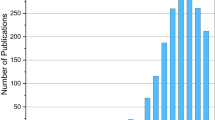Abstract
CZTS solar cells have been utilized as a replacement for CIGS and CdTe solar cells in thin-film technology. With the better absorption coefficient of this material, it has achieved efficiency higher than 13%. In this work, the performance of a CZTS thin-film solar cell (TFSC) is analyzed by replacing intrinsic ZnO (i-ZnO) with Mg-doped ZnO as window layer material. i-ZnO has good optical and electrical characteristics, but the optical, electrical, and morphological characteristics of Mg-doped ZnO are more promising for its application as window layer material in CZTS thin-film solar cells. The electrical properties of the solar cell are analyzed in the Silvaco TCAD under AM 1.5G illumination. A sharp increase in the performance of the solar cell is observed. Because of the higher transmittance of Mg-doped ZnO, the current density increases. With varying thickness of the window layer and absorber layer, the results in this work reveal maximum efficiency of 19.57%. Variations in the current density (Jsc), open-circuit voltage (Voc), and fill factor (FF %) are also observed. The proposed structure of the thin-film CZTS solar cell shows good performance by enhancing its efficiency.











Similar content being viewed by others
References
S. Silva, I. Soares, and O. Afonso, Economic and environmental effects under resource scarcity and substitution between renewable and non-renewable resources. Energy Policy 54, 113–124 (2013). https://doi.org/10.1016/j.enpol.2012.10.069.
P.A. Owusu, and S. Asumadu-Sarkodie, A review of renewable energy sources, sustainability issues and climate change mitigation”. Cogent Eng (2016). https://doi.org/10.1080/23311916.2016.1167990.
R.J. Zedalis, International energy law: Rules governing future exploration, exploitation and use of renewable resources. Int. Energy Law Rules Gov. Futur. Explor. Exploit. Use Renew. Resour (2017). https://doi.org/10.4324/9781315252056.
W. Rowley, and A. Westwood, The need for renewable energy. Pet. Rev. 57, 26–28 (2003).
J.A. Krautkraemer, Nonrenewable Resource Scarcity. J. Econ. Lit. 36, 2065–2107 (1998).
M. R. S. Shaikh 2017 A Review Paper on Electricity Generation from Solar Energy. Int. J. Res. Appl. Sci. Eng. Technol. 5: 1884–1889. https://doi.org/10.22214/ijraset.2017.9272.
C.-F. Hsu, R.-K. Li, H.-Y. Kang, and A.H.I. Lee, A Systematic Evaluation Model for Solar Cell Technologies. Math. Probl. Eng. 2014, 1–16 (2014). https://doi.org/10.1155/2014/542351.
K.D.G.I. Jayawardena, L.J. Rozanski, C.A. Mills, M.J. Beliatis, N.A. Nismy, and S.R.P. Silva, ‘Inorganics-in-organics’: recent developments and outlook for 4G polymer solar cells. Nanoscale 5, 8411–8427 (2013). https://doi.org/10.1039/c3nr02733c.
S. Saha, A status review on Cu 2 ZnSn(S, Se) 4 -based thin-film Solar cells. Int. J. Photoenergy 2020, 1–13 (2020). https://doi.org/10.1155/2020/3036413.
A.S. Nazligul, M. Wang, and K.L. Choy, Recent development in earth-abundant kesterite materials and their applications. Sustain (2020). https://doi.org/10.3390/su12125138.
T.P. Dhakal, C. Peng, R. Reid Tobias, R. Dasharathy, and C.R. Westgate, Characterization of a CZTS thin film solar cell grown by sputtering method”. Sol. Energy 100, 23–30 (2014). https://doi.org/10.1016/j.solener.2013.11.035.
T.D. Lee, and A.U. Ebong, A review of thin film solar cell technologies and challenges. Sustain. Energy Rev. Renew (2017). https://doi.org/10.1016/j.rser.2016.12.028.
A. Haddout, A. Raidou, and M. Fahoume, A review on the numerical modeling of CdS/CZTS-based solar cells. Appl. Phys. A Mater. Sci. Process. 125, 1–16 (2019). https://doi.org/10.1007/s00339-019-2413-3.
A. Cantas et al., Importance of CdS buffer layer thickness on Cu2ZnSnS4-based solar cell efficiency. J. Phys. D. Appl. Phys. (2018). https://doi.org/10.1088/1361-6463/aac8d3.
A. Gueddim, N. Bouarissa, A. Naas, F. Daoudi, and N. Messikine, Characteristics and optimization of ZnO/CdS/CZTS photovoltaic solar cell. Appl. Phys. A 124, 199 (2018). https://doi.org/10.1007/s00339-018-1626-1.
National Renewable Energy Laboratory, “Best-Research-Cell-Efficiencies-Rev211011.Pdf.” https://www.nrel.gov/pv/cell-efficiency.html.
A. Cherouana, and R. Labbani, Numerical simulation of CZTS solar cell with silicon back surface field. Mater. Today Proc. 5, 13795–13799 (2018). https://doi.org/10.1016/j.matpr.2018.02.020.
M.N. Tousif, S. Mohamma, A.A. Ferdous, and M.A. Hoque, Investigation of different materials as buffer layer in CZTS solar cells using SCAPS. J. Clean Energy Technol. 6, 293–296 (2018). https://doi.org/10.18178/JOCET.2018.6.4.477.
S.R. Meher, L. Balakrishnan, and Z.C. Alex, Analysis of Cu2ZnSnS4/CdS based photovoltaic cell: a numerical simulation approach. Superlattices Microstruct. 100, 703–722 (2016). https://doi.org/10.1016/j.spmi.2016.10.028.
M. Rouchdi, E. Salmani, B. Fares, N. Hassanain, and A. Mzerd, Synthesis and characteristics of Mg doped ZnO thin films: experimental and ab-initio study. Results Phys. 7, 620–627 (2017). https://doi.org/10.1016/j.rinp.2017.01.023.
J. Husna 2020 The Prospects Of Zinc Oxide (ZnO) For Window Layer Cigs Solar Cells. https://doi.org/10.15405/epsbs.2020.03.03.85.
S. Alhammadi, H. Park, and W.K. Kim, Optimization of intrinsic ZnO thickness in Cu(In, Ga)Se2-based thin film solar cells. Mater. (Basel) 12, 1365 (2019). https://doi.org/10.3390/ma12091365.
D. S. Software, ATLAS User’s Manual , vol. II: pp. 567–1000, 1998.
Acknowledgments
This publication is an outcome of the CSIR project (Grant No. 22(0830)/19/EMR-II) of the Govt. of India and the ASEAN-India Collaborative R&D project under the ASEAN-India S&T Development Fund (AISTDF) (Grant No. IMRC/AISTDF/CRD/2018/000068) by DST-SERB, Govt. of India.
Author information
Authors and Affiliations
Corresponding author
Ethics declarations
Conflict of interest
The authors declare that they have no conflict of interest.
Additional information
Publisher's Note
Springer Nature remains neutral with regard to jurisdictional claims in published maps and institutional affiliations.
Rights and permissions
About this article
Cite this article
Paul, R., Vallisree, S., Lenka, T.R. et al. Modeling and Simulation of CZTS Thin-Film Solar Cell for Efficiency Enhancement. J. Electron. Mater. 51, 2228–2235 (2022). https://doi.org/10.1007/s11664-022-09449-2
Received:
Accepted:
Published:
Issue Date:
DOI: https://doi.org/10.1007/s11664-022-09449-2




